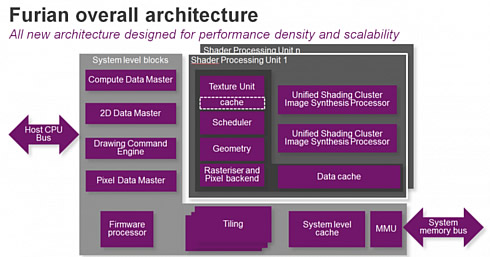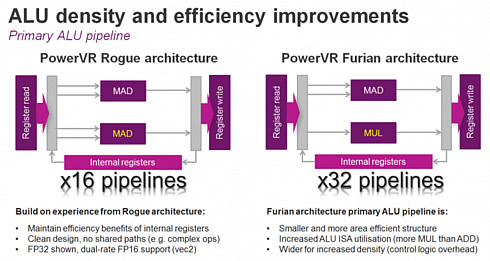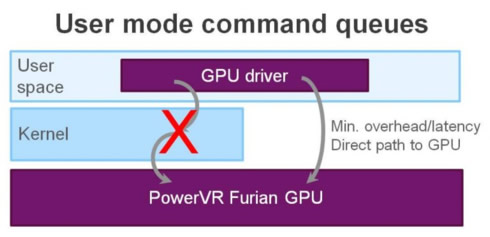
Imagination Technologies announced a new, high performance GPU core that supports the multiple, ultra-high resolution displays for cluster, Head-Up Display (HUD) and infotainment sustems in future cars.
Thanks to an 80% fillrate density improvement over the previous generation, the Furian Architecture-based four-cluster PowerVR Series8XT GT8540 GPU can simultaneously drive up to six 4K screens with complex UIs at 60fps.
The GPU features built-in hardware virtualization capability, which can provide a complete separation of services and applications, ensuring they remain secure against system intrusion or data corruption. The platform can support up to eight applications or services running in separate containers at once and automotive OEMs can deploy and remove services at will without affecting others running at the same time.
The Series8XT GT8540 can support long-running compute workloads on a single Shader Processing Unit (SPU) for ADAS functions such as lane departure warning, blind-spot detection, and surround view, amongst others. Other tasks, such as infotainment and cluster, can run on the second SPU, using prioritising mechanisms to reach system performance targets.
The PowerVR Series 8XT GT8540 is now ready for licensing.
Series8XT GT8540 Design elememts
Compared to the multi-core designs currently shipping in high-end smartphones and tablets, the single shader processing unit (SPU) - containing what Imagination describes as two-clusters, in the PowerVR GT8525 could be considered a fairly modest option to launch as the first GPU available to licence. However, the company says that the performance of this single SPU design is "a testament to how far Furian has moved the game on."

One of the changes is inside the shader processing units, which have been re-architected to be more area efficient with much higher utilisation of the Arithmetic Logic Unit (ALU). The texture unit now has its own cache, ensuring that it doesn't have to compete with the Unified Shading Clusters (USCs) for access to the data - the result is higher throughput efficiency with lower power. The texture unit now delivers double the fill-rate over the previous design at eight pixels per clock, for only a modest increase in area, Imagination says.
Another enhancement, first introduced with Series7XT, and enhanced further here, concerns the 2D Data Master. It's now fully asynchronous, enabling better utilisation of the core, also delivering better power efficiency. This enables the independent submission of 2D workloads, bypassing all tiling overhead (e.g. when doing 2D using 3D calls) making it much more efficient for things such as creating UIs - and again this helps to reduce power consumption.
And yet another enhancement to overall efficiency stems from the changes made to the primary ALU pipelines. This has doubled in width from 16 to 32 pipelines - delivering twice the throughput per clock. What's key though is that it does not take up twice the silicon area thanks to streamlining of the internal design and more shared control logic.

In addition, the function calls between the GPU driver and the GPU for compute, now no longer have to go through the OS kernel layer. They now use something called 'user mode queues' to communicate directly, reducing overhead and latency, in turn again reducing power consumption.

Additionally, the GPU now supports improved simultaneous access to more local memory addresses, which means each ALU pipeline can directly access the memory areas they need without stalls.

Mobile devices are limited to an SoC thermal envelope of 3-3.5W. Of that number, the GPU accounts for 30-50% of the power consumption. At an estimated 35fps/W, a Series8XT GT8525 in a mid-range SoC manufactured on TSMC's 10FF process falls in the sweet-spot of under 1.5W of power for the GPU.
To put it into perspective, against our previous generation Series7XT, Imagination expects that for the same performance target (iso-performance), a Series8XT GT8525 will use up to 60% less power against a comparable Series7XT GT7450, meaning the performance/W goes up to a 75%!